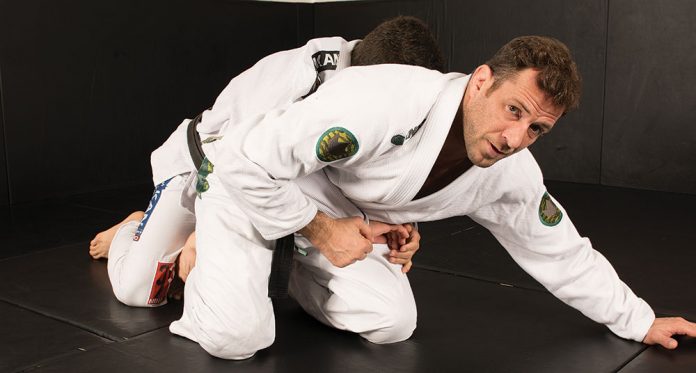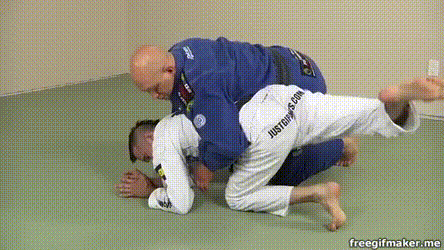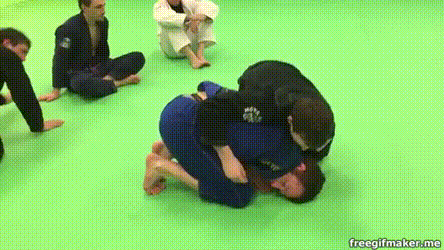
BJJ turtle position is a very interesting one in terms of Brazilian Jiu-Jitsu. It is a position adopted from Judo where it is the mother of all defensive positions. However, given the nature and sports rules of BJJ, the turtle can be much more than that. In fact, the turtle guard is a very useful attacking option to surprise your opponents from an unexpected position. In BJJ, Turtle position is no longer called a GUARD because of rules and point system change but you can do good use of it.
Have you ever heard of the BJJ turtle guard? Actually have you ever even thought about attacking from the turtle-like form a guard position? Well, as far as Jiu-Jitsu goes, you can most certainly do so. Not only can you attack, but you can easily transition to other positions as well. The turtle guard offers rolling transitions and blitz counterattacks that are going to surprise even seasoned opponents. From efficient leg locks to nasty sneaky wrist locks, there are plenty of options you can use to turn the tables from the turtle guard. All it takes is an open mind.
The main trouble with the turtle position is also its main strength. Namely, the turtle is a to a defensive position where your opponent can’t do absolutely anything to you. However, neither can you. The trouble is that people perceive the turtle position solely as a defensive stop. If you think about it is equal to being in closed guard and just staying there without attempting to do anything. You wouldn’t do that from the closed guard, so why do it from the turtle guard? Instead, think about what that position offers. BJJ turtle guard an open up attacks that are otherwise unavailable for you. Let’s look at how it works and how it can help you turn the tables on everyone!
Turtle Up!
The turtle position is one readily available during a guard pass. Once your guard defense fails, unless you want to be stuck inside control you’ll most likely attempt to turn. Turning to your belly is a dumb thing to do, so the turtle is the preferred option for grapplers. However, the question is what to do next? In most cases, the ball stays in your opponent’s court as they go about opening up your defenses. Sure, attacking the turtle can be a real pain, but eventually, something is going to work. So perhaps, you were better off fighting from bottom side control anyway. Let’s reconsider that.
In BJJ, turtle position can be a powerful guard-like position if you allow it. Once you get over your fear of giving away positions, you’ll discover the escape options the turtle guard offers. Namely, instead of just acting as a rock, you’ll see that guard recovery is a breeze if you know which direction to move to. On top of that, you can even look to go for sweeps, transition into takedowns or hit submissions straight away! The crucial piece of the puzzle here is your mindset. Of course, you’re going to need technical knowledge to execute anything with success, but first, you have to be willing to go for it. Do not see the turtle guard as a place to defend for dear life. Instead, look at it as the ultimate surprise attack position.
Of course, you need to be able to defend before you attack. This does not present a challenge as it comes instinctively to people. However, once you’re able to mount an unbreakable defense, what next? BJJ is about being smart and tricking your opponent, not about running down the clock.
Rolling Guard Recovery

The basic path to safety from BJJ turtle guard is nothing fancy. All you need to do to get back to a safe position that has more options available is to recover full guard. The first step to achieving this is through kicking your nearside leg back. Once your leg is out, place it behind the opponent. Next look to post your opposite sidearm in order to build a base. All it takes now is to block the near side leg of the opponent with your inside arm. Simply pick your hips up and sit through right into the closed guard. It is a basic as it gets and just as effective.

When you’re doing the rolling escape from the turtle guard, the point of reference is to get to a double underhook guard- kind of position. once there, you should use your hips to drop the weight down ending up in guard. An alternative is to go for a triangle choke and finishing right then and there.
An Attacking Turtle Guard Game
Remember that you need to use your solid defense in order to mount a decisive offense. In the hierarchy of understanding the BJJ turtle guard, attacks are going to have to wait. Make sure your chin is tucked in nicely and your arms and legs are tight. The basic principle of the turtle guard is to leave no space. If there’s space, there’s an opportunity for your opponent to break your structure. Once space is removed you can think about working. The first direction to go to escapes. Once you master the art of escaping and reversal, you can start thinking about throwing in some counterattacks.


Related:
A Half Guard Sweep That Does Not Fail
Destroy Your Opponents With These Banana Split Submission Tips
The Complete Sneaky BJJ Rat Guard System
A Complete Submission-Based Back Attacks System
Grip Fighting Strategies From Back Control








































